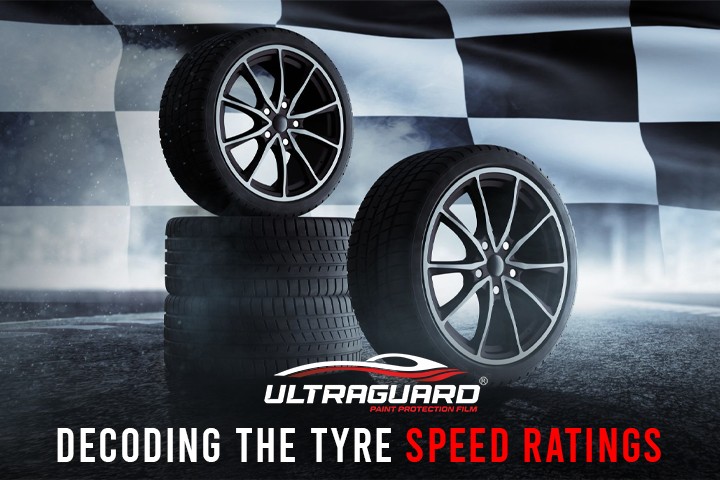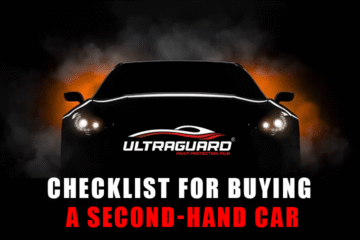Being an automobile enthusiast, we know how significant tyres are for the driver. You might obsess over tread patterns or brand names, but the tiny, crucial letter that dictates your safety on the road, the Tyre Speed Ratings gets totally ignored. That’s a massive mistake.
That single, unassuming letter on your sidewall is the literal safety margin built into your rubber. Skip this, and you’re rolling the dice, especially when you hit those open highway speeds. This is the actual, global, direct tyre guide for those who want to know more about it. Let’s ensure you understand what you’re driving on.
What is a tyre speed rating and Its Meaning?
Let’s reduce this confusion. What are the tyre speed ratings? It’s a certification, a simple letter like ‘H’ or ‘V’ that marks the maximum velocity the tyre is guaranteed to achieve below its maximum load for an extended duration without overheating and failing.
Why ought you care if you are not a racing driver? Because it is approximately summertime. Every time your tire rolls, it turns, and the friction creates warmth. If you push a tyre beyond its score, it generates warmth faster than it can cast off. This fast, excessive warmth can melt the inner components, main to ply separation, tread delamination, or a surprising, risky blowout. Choosing the right tyre speed ratings isn’t only for overall performance automobiles; it’s about making sure the structural integrity of your tyre can withstand the needs of your unique vehicle’s weight and strength, ensuring predictable handling and braking in any state of affairs. It’s fundamental safety.
Where is this critical letter hiding on my tyre’s sidewall?
It’s virtually simpler than you observed. The tyre speed ratings is constantly the final letter in a long sequence of numbers that defines the scale and load potential of your tire.
Look for a sequence of codes that appear to be this: 205/55R16 91V.
The ultimate letter, V, is the key. That’s your Tyre Speed Rating.
For a quick primer on the other numbers:
- 205: The width (how wide the tyre tread is).
- 55: The aspect ratio (how tall the sidewall is).
- 91: The Load Index (the maximum weight the tyre can safely carry).
- V: The tyre’s speed rating (your high-speed safety limit!).
If your tyres are old and scuffed up, the easiest place to find the original rating is on the tyre placard—that little sticker inside the driver’s side door frame or in your glove box.
Speed Code Translation: What do “H”, “V” and “W” imply in simple words?
Fortunately, the system is logical: the letters are progressive, in order you flow up through the alphabet, the tire is licensed for better speeds and receives typically more potent.
Here’s a quick listing of the codes you’ll see most commonly:
| Speed Rating | Maximum Speed (km/h) | Why You Need It |
| S | 180 km/h | Basic transport; common on smaller, lighter cars. |
| T | 190 km/h | Great for regular, city-to-highway driving; balanced performance. |
| H | 210 km/h | Required for sporty sedans and SUVs; it means stronger construction. (H = High Performance!) |
| V | 240 km/h | Higher-end luxury and performance models ensure cornering stability. |
| W | 270 km/h | Dedicated performance vehicles; built to survive track-like conditions. |
| Y | 300 km/h | The highest level, reserved for hypercars and extreme machines. |
Even if you never plan to hit a hundred and fifty mph, a higher-rated tire handles the warmth better and commonly has stiffer sidewalls, which means that it provides sharper, more responsive handling for ordinary site visitors.
Can I use a tire with a lower rating to save a few money?
Let me be clear: you have to in no way set up a tire with a speed greater than the one that came with your car.
- The Lower Rating Risk (Don’t Do It): If your manufacturer specified a ‘V’ tyre, and you buy an ‘H’ rated tyre to save a bit of money, you’re instantly downgrading your safety margin. The new tyre is simply not robust enough to cope with your car’s dynamic capabilities. You keep the stability and your protection in danger, just to save some amount of money. In addition, it could doubtlessly invalidate the automobile’s insurance or warranty.
- Higher Rating Benefits (Smart Choice): It is OK to improve your tyre speed ratings (for instance, from T to H). You enhance the tire’s structural energy and warmth resistance. The simplest minor aspect effect is that the ride can experience a piece more impregnable as the sidewalls are stiffer.
Always check with this complete guide to tire speed ratings that are in shape or exceed the authentic specification.
Conclusion
Now that my tires are safeguarded, what is the exceptional manner to protect my vehicle?
Awesome! You have saved the tyre by knowing the tyre speed ratings. The subsequent venture is to protect the lovely paint job. Road dirt, gravel spray, bird droppings and UV damage are constantly eating away your vehicle’s clean coat, ruining its shine and lowering its resale price.
The gold standard for paint safety nowadays is paint protection film. We at Ultraguard India are serious about keeping cars pristine. That’s why we champion high-quality, clear PPF. It’s an entirely transparent, self-healing film that acts as a virtually invisible barrier. It takes the hit from stone chips, shrugs off scratches, and keeps your factory paint looking flawless beneath.
Just as choosing the right Tyre Speed Ratings is crucial for function, protecting your exterior with a Best Paint Protection Film is the final step. To know more about it, call us on +91-93-10000-356. Do take the essential step in protecting your investment.
If you know more about PPF visit these link.
Frequently Asked Questions(FAQs)
Q1. Are C-rated tyres good?
Yes, a C-rated tyre is above average and is good at stopping in wet or liquid places. Stops 6m further in comparison to A grade tyres, but averages 12 m shorter than grade G tyres.
Q2. Among S and H, which one is good?
Between S and H, of course, H one is better as its rating is more in the maximum speed of 210km/h, and S is only 180km/h.
Q3. Which one to choose for a better load range, a C or a D tyre?
C range only tires are majorly more preferable and they provide good safety for smaller to medium-sized cars, but if your vehicle has a larger load capacity, then you can shift to D one.
Q4. Is it fine to have 7-year-old tyres on your car?
Though there is no definite age limit for a tyre and when you should replace it, it is significant to check your vehicle tyres closely once they reach between 7 and 10 years.
Q5. What do you mean by a 3% tyre rule?
A 3% tyre rule is applied while replacing the tires, then the new tire’s diameter should not be different from the original ones by more than 3%.
Q6. Does this penny test for tyres correct?
Yes, this penny test does provide a clear examination of the tread depth, but it might not give the proper and accurate measurement that a professional measurement will give you.





0 Comments